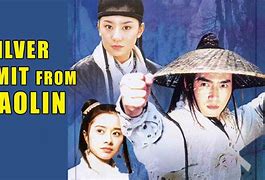PHENOMENALITY: *marvelous*
MYTHICITY: *good*
FRYEAN MYTHOS: *adventure*
CAMPBELLIAN FUNCTION: *metaphysical, psychological*
It's axiomatic that adventurous stories of vengeance give rise to more measured dramas about the problematic nature of revenge. Euripides' CHILDREN OF HERACLES wrought social commentary out of the violent myths of the Son of Zeus, while Shakespeare's HAMLET undermined the uncomplicated revenge-plot of the medieval "Amlethus" tale.
THE CROW, based on James O'Barr's underground comic book, is not the same kind of serious drama as those older works. But both as comic and as movie, it counterpoints the violent action with intense sentiment about what it means to lose friends or family members to the specter of death.
The Detroit of the film is practically a "city of dreadful night," with few signs of life or light. Gangs of murderous thugs rule the city, committing theft and murder as they please, with the broad implication that the Detroit PD has been paid to look the other way. Yet a few good people still persist. An ersatz family-feeling arises between rock musician Eric Draven (Brandon Lee), his girlfriend Shelley (Sofia Shinas), and a little girl, Sarah (Rochelle Davis), whom the couple watch over in the absence of her cocaine-addicted mother. Good cop Albrecht (Ernie Hudson) becomes loosely allied to the trio under tragic circumstances, investigating the case when a gang ruled by the evil Top Dollar (Michael Wincott) has Eric and Shelley killed.
One year later, on "Devil's Night" (the night before Halloween), Sarah still lives with her addict-mother but mourns for her lost family by visiting the graves of Eric and Shelley. When she leaves, a mysterious crow lands on Eric's headstone. Eric breaks out of his own grave, fully restored to a quasi-living being. Confused, he returns to his deserted loft, and there he dons black clothes and his only "superhero mask," white clown-makeup with black markings. He finds that he has an empathic link with the crow, from whom he divines his mission: to wreak divine vengeance upon Top Dollar and his gang.
Director Alex Proyas brings a fine sense of style to the battle-scenes, in which Eric, now immune to permanent physical harm, takes out various freakish gangbangers as the avenger works his way up to the leader. But THE CROW is most distinguished by its displays of honest sentiment, as both Sarah and Albrecht become aware that the dead man they knew has come back to life. Moreover, Eric's powers are not limited to violence. After killing the gangbanger with whom Sarah's mother is entangled, Eric purges the woman of her addiction, making it possible for her to be a mother to Sarah again. That said, the main villain gets the chance to undermine his undead foe's advantage. Top Dollar's skanky sister Myca (Bai Ling) has noticed the presence of the crow that accompanies Eric during his crusades, and so finds the hero's Achilles heel. Yet Eric triumphs in the end, in part by using his emphathic power in reverse, infusing the villain with the same drug-agonies he removed from Sara's mother. The undead hero survives to fight again, although the first film was the only one to do justice to the concept's dramatic themes.
Eric was the role of a lifetime for the son of Bruce Lee, who had only played a handful of roles before landing this part-- and unfortunately, his lifetime was cut short by the mishandling of a prop gun during filming. (Strangely, on a DVD voiceover for the film, the two speakers barely address the subject of Brandon's on-set demise.) Hudson and Davis are excellent, but Wincott scores as one of the best villains of the nineties, in that he's not motivated by mere gain, but by a Sadea desire to wreak chaos. But for the most part, later adventure-films, with or without costumes, made few if any attempts to emulate the mordant poetry of THE CROW.
































